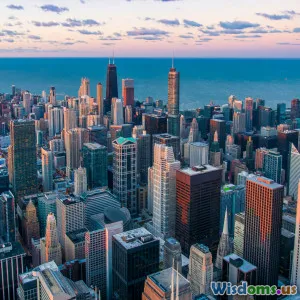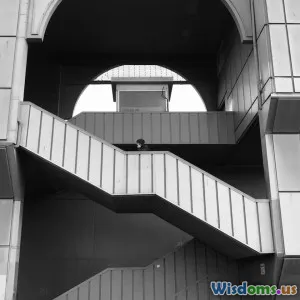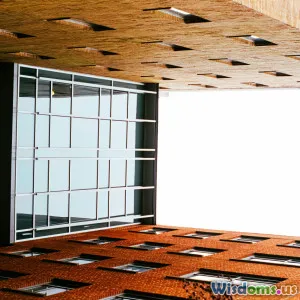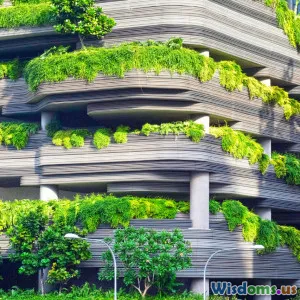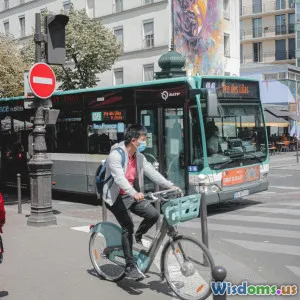
Why Mixed Use Zoning Could Save Your Neighborhood
9 min read Exploring how mixed use zoning fosters vibrant, safe, and resilient neighborhoods through integrated urban living. (0 Reviews)
Why Mixed Use Zoning Could Save Your Neighborhood
Urban planning is evolving rapidly as cities grapple with growing populations, economic shifts, and the need for sustainability. Among these changes, mixed use zoning stands out as a transformative approach — one that many urbanists believe could literally save neighborhoods from stagnation, decline, and isolation.
But what exactly is mixed use zoning, and why is it increasingly recognized as a cure for many urban woes? This article explores this modern planning technique, backed by real-world examples, expert insights, and compelling data, to reveal how mixed use zoning fosters vibrant, resilient, and inclusive communities.
Understanding Mixed Use Zoning
Mixed use zoning allows multiple land uses, including residential, commercial, cultural, and sometimes industrial, to coexist within the same area or even the same building. Traditionally, zoning rules in many cities strictly separated these uses, often resulting in isolated residential suburbs, commercial strips, or industrial zones.
Historical Context
Originally, zoning regulations were designed to separate conflicting activities — keeping noisy factories away from houses, for instance — to protect property values and public health. However, over time, this rigid separation contributed to urban sprawl, car dependency, and social isolation.
Mixed use zoning aims to reverse these trends by blending diverse functions that support residents’ daily needs within walking distance.
The Benefits of Mixed Use Zoning
1. Enhanced Walkability and Reduced Traffic
One of the most praised advantages of mixed use developments is increased walkability. The National Association of Realtors cites studies showing that neighborhoods integrating shops, offices, parks, and homes encourage residents to walk or bike, reducing reliance on vehicles.
For example, the Pearl District in Portland, Oregon, transformed from a declining industrial area to a thriving mixed use neighborhood with parks, apartments, retail, and offices all in one.
Studies show that residents in such areas drive up to 20-40% less than those in single-use zones, contributing to reduced traffic congestion and lower emissions.
2. Economic Vitality and Resilience
Mixed use zones stimulate local economies by supporting small businesses and attracting diverse employment opportunities. According to an Urban Land Institute report, businesses in mixed use environments benefit from increased foot traffic and greater community engagement.
In New York City's Williamsburg neighborhood, rezoning allowed artists’ studios, residential lofts, and cafes to coexist, leading to a creative economy boom that revitalized the area.
Moreover, when diverse land uses coexist, economic downturns in one sector (like retail) may be cushioned by housing or office rents, enhancing neighborhood resilience.
3. Social Interaction and Community Cohesion
Cities are social ecosystems. Mixed use zoning design actively supports social connectivity by fostering public spaces and encouraging shared use.
The Copenhagen Municipality emphasizes that mixed-use developments promote “social sustainability” because people live, work, and socialize in proximate settings, strengthening community bonds.
Such cohesion combats urban isolation — a growing concern linked to mental health issues. Places designed with mixed uses tend to host more community events, farmers’ markets, and gatherings, making neighbors familiar and connected.
4. Environmental Sustainability
By reducing the need for car travel and promoting higher-density development, mixed use zoning aligns with sustainability goals. It reduces carbon footprints and preserves greenfield land on city outskirts.
A 2017 study published in the Journal of the American Planning Association found that mixed land use is tightly correlated with lower per capita greenhouse gas emissions.
Further, mixed use spaces often incorporate green infrastructure like rooftop gardens and permeable surfaces to manage stormwater and enhance urban biodiversity.
Case Studies in Success
Portland, Oregon — The Pearl District
Once an industrial heavyweight hub with warehouses and railroads, the Pearl District underwent a mixed use transformation starting in the 1990s. By rezoning for apartments, boutiques, galleries, cafes, and parks, it attracted new residents and businesses without sacrificing character.
The district is now hailed for its livability and design, emphasizing eco-friendly transportation and close-knit community features.
Houston, Texas — Midtown
Houston’s Midtown district embraced mixed use zoning to counter urban sprawl and downtown flight. By allowing offices, apartments, and retail in the same zone, Midtown grew into a vibrant neighborhood focusing on walkability.
Event spaces, restaurants, and apartments with commercial spaces below create a dynamic environment treasured by residents and local entrepreneurs alike.
Tokyo, Japan — Shibuya
Tokyo’s Shibuya ward exemplifies mixed use at an extreme scale. Buildings typify integrated urban life: ground floors host retail, upper floors offices, and rooftops residential terraces or gardens.
This multifaceted zoning supports over half a million daily visitors and residents, balancing commercial vitality with quiet residential enclaves and cultural hubs.
Challenges and Considerations
While mixed use zoning holds promise, it is not without potential challenges:
-
Noise and Privacy: Balancing commercial activity’s intensity with residential comfort requires careful design standards.
-
Gentrification: Mixed use zones can drive up property values, potentially displacing lower-income residents. Policy interventions like affordable housing mandates become crucial.
-
Infrastructure Demands: Higher density mixed use areas need upgraded public transit, utilities, and open spaces to maintain quality of life.
Successful implementation demands thoughtful community engagement, zoning codes that provide flexibility but maintain quality, and strategic public investments.
How Residents Can Advocate for Mixed Use Zoning
Interested in saving your neighborhood through mixed use zoning? Here are actionable steps:
-
Engage in Local Planning Processes: Attend city council or planning commission meetings to understand zoning proposals.
-
Form Neighborhood Coalitions: Uniting voices increases influence to advocate for zoning reforms.
-
Study Local Examples: Present case studies of successful mixed use revitalization to community leaders.
-
Push for Inclusive Planning: Ensure affordable housing and community-serving amenities are integral.
-
Promote Active Design Principles: Advocate for streetscapes that invite walking, biking, and social interaction.
By becoming informed and proactive, residents can help shape neighborhoods into lively, healthy, and sustainable places.
Conclusion
Mixed use zoning is more than just a planning tool — it is a strategy for urban survival, resilience, and enrichment. By blending homes, workplaces, shops, and parks, this approach creates neighborhoods that meet the diverse needs of their inhabitants.
Whether reducing traffic congestion, bolstering local economies, fostering social connection, or promoting environmental sustainability, mixed use zoning’s multi-dimensional benefits are clear.
As cities face the pressures of growth, climate change, and shifting lifestyles, embracing mixed use zoning can provide a blueprint that saves neighborhoods from decline and propels them toward thriving futures.
Your neighborhood could be next.
Rate the Post
User Reviews
Popular Posts













